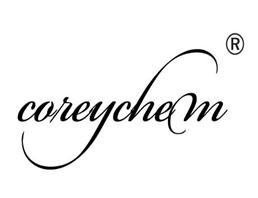
Chitosan
| Price | $100 |
| Package | 1KG |
| Min. Order: | 1KG |
| Supply Ability: | 100KG |
| Update Time: | 2019-07-06 |
Product Details
| Product Name: Chitosan | CAS No.: 9012-76-4 |
| EC-No.: 222-311-2 | Min. Order: 1KG |
| Purity: 99% | Supply Ability: 100KG |
| Release date: 2019/07/06 |
CR335
| Product Name: | Chitosan |
| Synonyms: | Chitosan from shrimp shells ;KiOmedine-CsU? B;KiOmedine-CsU?A;Chitosan (200-600mPa.s, 0.5% in 0.5% Acetic Acid at 20deg C);Chitooligosaccharide: Chitosan oligomer;Oligochitosan;Water soluble Chitosan;Chito-oligosaccharide (COS) |
| CAS: | 9012-76-4 |
| MF: | C6H11NO4X2 |
| MW: | 161.16 |
| EINECS: | 222-311-2 |
| Product Categories: | Oligosaccharide,Biostimulate;Food additives;Miscellaneous Natural Products;Biochemistry;Polysaccharides;Sugars;Nutritional Supplements;Dextrins、Sugar & Carbohydrates;Activity Other;Carbohydrate adjuvants;Carbohydrates A-C;Chitosan and Chitin;Activity;and Substrates;Biochemicals and Reagents;Carbohydrates;Carbohydrates A to Z;Cell Culture;Chitosan;Enzyme Substrates;Enzymes;Inhibitors;Materials Science;Natural Polymers;Polymer Science;Polymers;Polysaccharide;Vaccine Adjuvants;Vaccine Production |
| Mol File: | 9012-76-4.mol |
 |
|
| Chitosan Chemical Properties |
| storage temp. | room temp |
| solubility | dilute aqueous acid (pH <6.5).: soluble |
| form | (Coarse ground flakes and powder) |
| color | White to Off-white |
| Stability: | Stable. Incompatible with strong oxidizing agents. |
| EPA Substance Registry System | Chitosan(9012-76-4) |
| Safety Information |
| Hazard Codes | Xn |
| Risk Statements | 20/21/22-36/37/38 |
| Safety Statements | 24/25-36-26 |
| WGK Germany | - |
| RTECS | FM6300000 |
| F | 3 |
| TSCA | Yes |
| HS Code | 39139000 |
| MSDS Information |
| Provider | Language |
|---|---|
| Chitosan | English |
| SigmaAldrich | English |
| ACROS | English |
| Chitosan Usage And Synthesis |
| Outline | The commonly referred chitin mainly means chitosan. It appears as amorphous solid with the specific rotation [α] D11 being 3 °~+ 10 °. It is almost insoluble in water but is soluble in organic acids such as formic acid, acetic acid, benzoic acid and naphthenic acid as well as some dilute inorganic acids. The industrial product appears as white or off-white translucent flake solid with slightly pearlescent. It is tasteless, non-toxic and readily biodegradable. It is a rare natural cationic polyelectrolyte. The polysaccharide obtained by removing the acetyl group in the chitin glycosyl through strong base hydrolysis or enzymatic reaction can be dissolved in an aqueous solution of low acidity with excellent biocompatibility, non-antigenicity and is insoluble in body fluids. It can be obtained through using the raw material of chitin that is widely existed in the lower animals and plants, such as the shell of arthropods (shrimp, crab) for deacetylation reaction via alkali and heating treatment. Chitosan is widely applied in medicine, mainly includes: 1. kill parasites and inhibit bacterial activity; 2. produce medical fibers and films, such as surgical sutures, medical paper and fiber membrane, the membrane artificial kidney, artificial skin, etc.; 3. used as drug carriers, sustained-release membrane, sustained release gel; 4. anti-tumor; 5. used as a coagulant and anti-coagulant; 6. used as ophthalmic materials such as contact lenses; 7. lower the lipid and cholesterol; 8. anti-acid and anti-ulcer. This product is non-toxic to humans and will not produce secondary pollution to the environment as well. Therefore, it has wide application in the field of water treatment, food, medicine and agriculture. In water treatment, it is mainly used as polyelectrolyte coagulant, sludge dewatering aids and purifying agent. In food processing, when being used as a flocculant in clarifying juice products, it can promote solid-liquid separation to remove tartaric acid and suspended solids particle fro the turbid fruit juice, increase transparency, improve product quality and taste. In the pharmaceutical industry, chitosan is used as an antibacterial agent, anti-clotting agents, antiviral agents, anticancer agents, hemostatic agents and dialysis film. In agriculture, it can be used as a feed additive, anti-bacterial agent for plant pathogens and surface covering agent for plant seeds. |
| Physical and Chemical Properties | Chitosan is the second most abundant (only next to cellulose) biopolymer and is widely distributed. It is mainly distributed in many lower animals particularly the shells of arthropods such as shrimp, crabs and insects. It is also presented in the cell wall of in lower plants such as algae and fungus. Chitosan can be obtained through the deacetylation of chitin. Under the conditions of 40% NaOH and 100 ℃, chitin is subject to deacetylation reaction and give chitosan. It appears as a white or off-white translucent sheet-like gray solid. It is insoluble in water and alkali, but can be dissolved in most kinds of dilute acid including formic acid, acetic acid and hydrochloric acid. The molecular structure of chitosan is similar to that of the cellulose with the only difference being that the C2-position connects the amino group (-NH2). So it has affinity to the paper fibers, evolving strong ionic bonding and hydrogen bonding. Moreover, the chitosan has film-forming property that can help to improve the surface strength of the paper, thus becoming one of enhancers applied to specialty paper. Chitosan appears as powder state and is tasteless, odorless with its aqueous solution having some spicy sense. Adding chitosan to the food for making soup and accompanied with a certain degree of cooking, frying, baking and other heat treatment will have its structure be not changed. Under the protection of nitrogen gas, even upon being heated to 250 ℃, the decomposition phenomenon does not occur. At room temperature, placing chitosan powder in natural place free of sunshine for preservation of 181d causes no significant changes in aspects including appearance, solubility, and the degree of deacylation. The biscuits supplemented with chitosan, when packaged in a state with the temperature of 40 ℃, the relative humidity of 75% environment for preservation of 80d, have their content of dietary fiber and chitosan remain not changed. 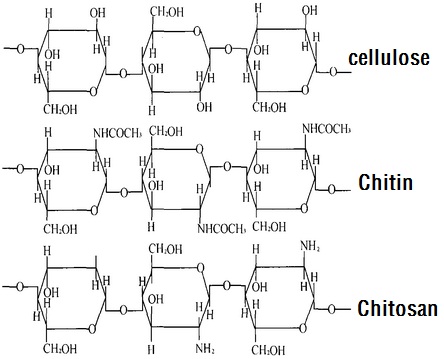 The chemical structure of chitin, chitosan and cellulose |
| Chitin | Chitin is the second most abundant biopolymer in nature and has wide distribution. It is also an important component contained in many lower animals, particularly the shell of arthropods such as shrimp, crabs, insects, etc. It is also presented in the cell wall of lower plants such as algae and fungi. It is estimated that the annual biological synthesis amount is more than 1 billion tons per year. It is also a great renewable resource. The structure of chitin, compared with that of cellulose, in addition to the presence of hydroxyl groups in the molecule, it also contain acetamido and amino functional groups with lots of group available for structural modification. The deacetylated product of chitin is chitosan. Chitin, chitosan and derivatives have more abundant functional properties than cellulose and its derivatives. In addition to many applications in the food industry, they also have very important applications in many areas such as pharmaceutical, chemical, biotechnology, agriculture, textiles, printing and dyeing, paper making, environmental protection, etc. Chitin is the β polymer of the polysaccharide compound 2-acetamido-2-deoxy-D-glucose obtained via the removal of acetyl group of the polymer formed through connection of beta-(1 → 4) glycosidic bond of 2-acetyl-amino-2-deoxy-D-glucose, namely chitosan. Figure 2-7 shows the chemical structure of chitin, chitosan and cellulose with their structure being similar with each other. Since the existing technology is not yet capable of fully de-acetylating chitin into chitosan in 100% as well as difficult to completely separate the two.Therefore, the current chitosan commodity is usually the mixture of chitosan and chitin but requires the chitosan content to be more than 60%. But for chitosan good to be the basic functional food material, the chitosan content of should be more than 85%. Chitin is not soluble in common acid and has very stable chemical properties. This is an important factor for restricting its long-term development. Chitosan, after the deacetylation, appears as white to pale yellow powder. Although it is not soluble in water, alkaline solutions and organic solvents, but is soluble in dilute acid solution including inorganic acid (hydrochloric acid, nitric acid, etc.) and an organic acid (acetic acid, lactic acid, formic acid, ascorbic acid, malic acid, etc.). For aqueous solution of citric acid, tartaric acid and other multivalent organic acid, it is only soluble when being heated to high temperature while exhibiting gelatinous when the temperature drops. |
| Antibacterial effect of chitosan | Chitosan has broad antibacterial activity, but with different concentrations of chitosan having different antibacterial capability. For example, when the chitosan concentration is 0.1%, it can completely inhibit the reproduction of all kinds of fungi Fusarium genus within 8d but this concentration has no effect on Rhizopus, Penicillium, Aspergillus and other fungus. At a concentration of 0.4%, it also has strong inhibitory effect against Escherichia coli, Proteus vulgaris, Bacillus subtilis, and Staphylococcus aureus. In addition, chitosan of different degrees of deacylation have their antibacterial properties being also different with mold of high level of deacylation having strong anti-mold effect. One reason is that the chitosan interacts with the surface portion of mold cells, increasing the cell permeability. Preservatives with chitosan being combined with sodium acetate, adipic acid have more significant antibacterial effect without affecting the flavor of food. Antibacterial effect of chitosan mainly includes the following two mechanisms: one is that chitosan adhere to the cell surface and form a layer of polymer film, preventing the transport of the nutrients into the cells, thus playing the role of antimicrobial sterilization; the other mechanism is that: chitosan enters into the cell body through penetration into the cell body, adhering the anion-containing cytoplasm inside cells and cause flocculation, disrupting the normal physiological activities of cells, thus killing the bacteria. Because the cell wall structure of gram-positive bacteria and gram-negative bacteria are different with the two actions having different effects, so chitosan of different molecular weight has different antibacterial mechanism. The above information is edited by the chemicalbook of Dai Xiongfeng. |
| Physiological role and efficacy | Chitosan is a dietary fiber with various efficacies such as lowering serum cholesterol, regulation of intestinal flora and reducing blood pressure and other effects. After the human intake of chitosan, fecal analysis has showed that it is hardly digested and absorbed, and therefore belonging to a dietary fiber. Studies have shown that chitosan has some characteristics of dietary fiber, such as water retention, swelling property, adhesion property and difficult for digestion and absorbing, etc. It can promote gastrointestinal peristalsis, adhesion of toxic substances, increase stool volume, lower abdominal and intestinal pressure, improve constipation and prevent colorectal cancer. Chitosan has similar physical and chemical property as gastric mucin with effects of inhibiting gastric acid, anti-ulcer and anti-inflammatory effect. It is an anti-gastric acid polysaccharide with swelling into sticky syrup with adhesion property upon coming across water. It can form protective film in the stomach to reduce the stimulation of gastric acid on the ulcer surface. Food safety: when the dose of chitosan feeding animal reaches 20% of the feed, cases of animal deaths have been reported. It is believed that it is due to the gel formation in animal offal caused by high concentrations of the chitosan that inhibit the nutrient absorption by animal. At present, we need to systematically study the physiological roles of the high viscosity chitosan macromolecules and small molecules of low viscosity as well as conduct long-term chronic toxicology test on the safety and metabolism of the chitosan of clear source. 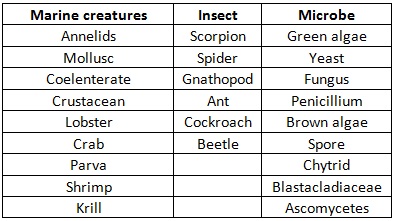 The main resource chitin, chitosan |
| Market prospect | Chitosan is the only alkali amino polysaccharides existing naturally in large amounts with a series of special functional properties. It has a wide range of important applications in food and agriculture. It has rich source and simple preparation and filming process with superior fresh performance and will surely play an increasingly important role in food preservation, extending shelf life and so on. In addition Chitosan can also enhance immunity, remove excess amount of fact in the body, inhibit harmful bacteria, reduce cholesterol, regulate blood sugar, and non-toxic anti-cancer as well as being used as biomedical materials. Studies have shown that chitosan can absorb cadmium, mercury, copper and other heavy metals, can be used as a variety of colloidal particles for flocculation to be applied to the clarification for juice, sucrose cleaning, waste water treatment and the flocculation of protein mycelium. In addition, since the chitosan has biological function and is safe and non-toxic, biodegradable and biocompatible, etc., it has excellent application prospect in medicine. In agriculture, chitosan is a very effective carrier of fertilizers and pesticides and can reduce the environmental pollution of agricultural fertilizers to effectively protect the environment and maintain ecological balance. Our country has long coastline with rich resources of shrimp shells and crab shells. They will cause pollution of the environment if abandoned, and therefore conducting further processing to the shrimp shells and extracting chitin from it for making chitosan, can achieve the goal of cleaning the environment and turning waste into treasure purposes. Chitosan is a renewable resource as well as having a strong ability of preservation. Therefore, as a kind of new natural food preservative drawing global concern, it has huge market potential and broad prospects. Reference: Tang Chunhong editor. Natural preservatives and antioxidants Beijing: China Light Industry Press .2010 on page 48-51. |
| Limited use | GB2760-2001: Meat sausage (Square ham and round ham) 6.0g/kg. |
| Chemical Properties | It appears as white amorphous transparent material and contains about 9% nitrogen. It is odorless and tasteless. |
| Uses | It is mainly applied to food, medicine, agricultural seeds, daily chemicals, industrial wastewater treatment and other industries. Chitosan has various effects such as improving immunity, activation of cells, preventing cancer, lowering blood pressure, lowering blood pressure, anti-aging and regulating body environment. It can be used in medicine, health care and food fields. In the field of environmental protection, chitosan can be used in sewage treatment, protein recovery, and water purification. In functional materials, the chitosan can be used in film material, carriers, adsorbents, fibers, medical materials and the like. In the field of light textile, chitosan can be used for fabric finishing, health underwear and paper additives. In the field of agriculture, it can be applied to feed additives, seed treatment, soil improvement, and preservation of fruit. In the field of tobacco, tobacco Chitosan is an excellent sheet gel and can also improve the taste with being non-toxic and odorless upon burning. |
| Production method | 20g of chitin was added to 300mL of 50% NaOH solution, and completely soaked for heating and incubating at 95 ℃ for 1.5h, filter the alkaline solution, wash with water to neutralization, dry at low temperature to give 15.6 g of transparent sheet product. |
| Chemical Properties | faintly beige solid |
| Uses | Forms gels with multivalent anions. Gives clear solutions that dry to strong, clear films. |
| Uses | Ideal for wound healing and hemostasis; biosurgery and ophthalmology; scaffold and cell therapy; and drug delivery and vaccines |
| Uses | Flocculant, protein precipitation, encapsulating agent and aqueous thickener. |
| Uses | also available in pharma grade |
| Chitosan Preparation Products And Raw materials |
| Preparation Products | Chitin-->drug delivery of chitosan carboxymethylcellulose complexes-->materials of oral delivery system for peptide drugs and their controlled release-->CARBOXYLATION CHITOSAN-->the gum from the chitin |
| Raw materials | Sodium hydroxide-->Formaldehyde-->Acrylamide-->Poly(acrylamide)-->Chitin-->Amino tris(methylene phosphonic acid) |
Company Profile Introduction
Established in 2014,Career Henan Chemical Co. is a manufacturerspecializing in the sale of fine chemicals.
Mainly deals in the sales of:
Pharmaceutical intermediates
OLED intermediates:
Pharmaceutical intermediates;
OLED intermediates;
You may like
-
CAS:100491-29-0
$98.00 / 1KG
Recommended supplier
| Product name | Price | Suppliers | Update time | |
|---|---|---|---|---|
| $42.00/1g |
VIP6Y
|
TargetMol Chemicals Inc.
|
2026-01-14 | |
| $200.00/1kg |
VIP1Y
|
Shijiazhuang Byine Trading Co.,ltd
|
2025-12-16 | |
| $20.00/25kg |
VIP1Y
|
Nexal Inc
|
2025-07-10 | |
| $1.00/1g |
VIP5Y
|
RongNa Biotechnology Co.,Ltd
|
2025-06-02 | |
| $5.00/1KG |
VIP1Y
|
Wuhan JiyunZen Tech Co., Ltd.
|
2025-05-07 | |
| $0.00/25kg |
VIP5Y
|
WUHAN FORTUNA CHEMICAL CO., LTD
|
2025-05-06 | |
| $0.00/1kg |
VIP2Y
|
Watson Biotechnology Co.,Ltd
|
2025-04-29 | |
| $100.00/1KG |
Hebei Yiduo Import and Export Co., Ltd.
|
2025-03-21 | ||
| $55.00/1KG |
Shandong Xuhuang New material CoLTD
|
2025-02-21 | ||
| $0.00/1KG |
Hebei Chuanghai Biotechnology Co., Ltd
|
2024-10-31 |
- Since: 2014-12-17
- Address: Zhengzhou High tech Zone, Henan Province, China
INQUIRY
杨俊青
sales@coreychem.com
sales@coreychem.com



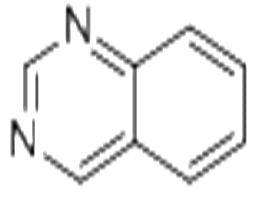
![ETHYL 1-(2,4-DIFLUOROPHENYL)-7-CHORO-6-FLUORO-4-OXO-HYDROPYRIDINO[2,3-B] PYRIDINE-3-CARBOXYLATE](https://img.chemicalbook.com/ProductImageEN/2018-8/Large/d3cde72f-5981-444e-93f4-90aed581baa7.gif)
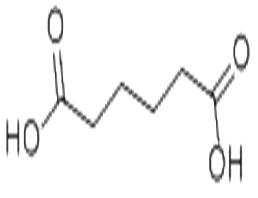

 China
China